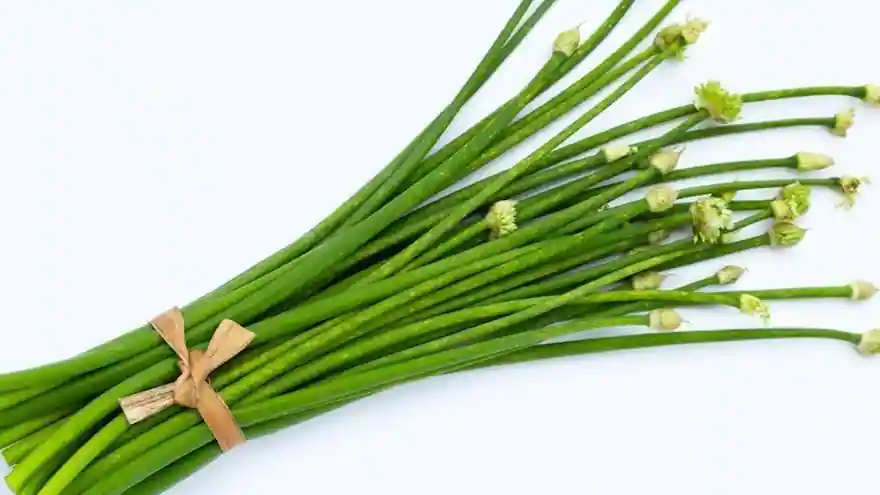I remember, come winter, peyajkoli posto would be a staple dish on our lunch platter. This is not unique to my family alone but a typical scene in almost all Bengali households. Thus, those rooted in Bengali cuisine must be aware of this wintergreen. For the unversed, peyajkoli is an onion flower stalk. Typically, in the period starting from November through the end of February, the markets in Bengal are swamped with this gorgeous green vegetable. And the locals cook an array of dishes with it to infuse the season's typical aroma and taste to culinary fare.
Knowing It Better
Peyajkoli is nothing more than an onion's green stem. The literal translation is the flower bud of onions. In English, it is known as Onion Flower Stalk. While the onion bulbs are underground, it sprout five leaves and a stem above ground, with a flower on top. During the winter, the stalk is chopped off and sold in the market as peyajkoli. The onion is left in the ground for an extended time until all the leaves have dried. The onions are then harvested between January and May. During November, there is another harvesting cycle. The onion stalk's blossoms provide the seed for future harvest. The growers conserve some of the stalks for this reason and sell the rest.

A bundle of onion flower stalk, Image Source: Freepik
Are they the same as spring onions?
The same plant also produces spring onions. It is, however, available all year. Spring onions are onions that are harvested before they develop into bulbs. These are noted for their thin, long leaves and are commonly used in Chinese cuisine. Peyajkoli, on the other hand, is the main ingredient in the dish. When cooked, it softens and becomes sweet. They are thicker, firmer and have a body with more volume. Unlike spring onions, they keep their texture (if not overcooked) and add a subtle sweetness.
A plethora of Bengali recipes with Peyajkoli
 Rice with alu peyajkoli bhaja, Image Source: playfulcooking.com
Rice with alu peyajkoli bhaja, Image Source: playfulcooking.com
Bengalis know how to make the most of peyajkoli, and no wonder the list of recipes is endless. Literally, every dish gets a touch of peyajkoli in winter. A simple yet tasty dish is Peyajkoli posto (poppy seeds). Likewise, a few loves to blend it with potatoes to make alu peyajkoli bhaja. Using another winter vegetable, cauliflower, Bengalis also prepare alu phulkopi diye peyajkolir torkari. The hardcore non-vegetarians add this green to their favourite fish and shrimp dishes. A few examples are peyajkoli macher jhol and peyajkoli chingri macher chorchori.
Let's try the Bengali peyajkoli posto recipe.
Peyajkoli Posto
 Peyajkoli posto, Image source: mangsho_mishti_and_more@Instagram
Peyajkoli posto, Image source: mangsho_mishti_and_more@Instagram
Ingredients
- 3 bundles of peyajkoli
- 4 tbsp poppy seeds
- 3 finely sliced onions
- 8 green chillies
- 3 tbsp mustard oil
- 1/2 tsp black cumin seeds
- salt to taste
Method
- Soak the poppy seeds in warm water for about 20 minutes, then filter and allow them to dry slightly in a colander.
- Cut the onion stems into 1 1/2 inch lengths and set aside.
- In a blender, pour the posto or poppy seeds and 4 green chillies and grind it to a fine paste
- In a wok, heat 2 tbsp mustard oil, add cumin seeds and let them splutter
- Now pour in the chopped onions, and green chillies, and keeping the flame low, cook till the onions turn translucent
- Add the onion stalks and season with salt
- Cook, occasionally stirring, until the onion stalks are soft
- Introduce the posto paste, giving it a good mix, and simmer for another 4-5 minutes over a medium heat
- If it becomes too dry, feel free to splash a bit of water
- Finish it by drizzling mustard oil
Serve hot with steamed rice.


